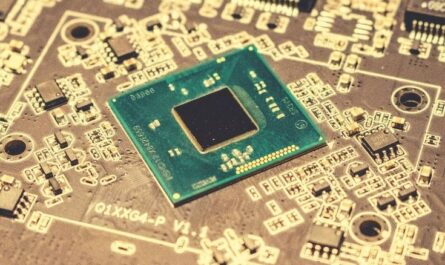Early Mobile printers
The first mobile printers were introduced in the late 1990s as technology improved to allow printing from portable devices. Some of the earliest mobile printers were created by Canon and weighed just under 5 pounds. These initial printers connected via USB and printed photos or basic text documents from early digital cameras, PDAs, or the first smartphones. However, print quality was fairly low at 150-300 dpi and they had limited paper capacity.
Improvements in Size and Connectivity
By the mid-2000s, mobile printers saw major size reductions and new connectivity options. Hewlett Packard released printers under 2 pounds that connected via Bluetooth. This allowed wireless printing from a variety of devices within a 30-foot range. Inkjet and thermal printing technologies continued improving print quality to 300-600 dpi. Lithium-ion batteries also increased to allow 30-50 pages per charge. Print speeds also increased to 2-5 pages per minute. These advances made mobile printers more practical for occasional use away from home or office printers.
Modern Portable Printer
Today’s mobile printers have seen tremendous advancements that make them more capable than ever. Portable Printer Sizes have reduced to as small as a smartphone while print quality has reached photo-lab quality at 300-1200 dpi. New models weigh under 1 pound and print speeds up to 10 ppm. Wireless connectivity options now include WiFi, Bluetooth, and cloud services. Larger capacity batteries can print 100+ pages on a charge. Popular models offer additional features like auto cutters, passport/ID scanners, and NFC tap-to-print. Memory card slots allow directly printing photos. Thermal, photo, and duplex printing modes suit more uses.
Connectivity and Cloud Services
Connectivity continues expanding printing possibilities. WiFi allows wireless sharing and printing from any compatible device on the same network. Dedicated apps further enhance the experience and remotely control print jobs. Cloud services let users print documents or photos from any internet-connected device, regardless of location. Documents, photos, or other files can be uploaded to online servers and printed on the go. Bluetooth maintains lower power wireless printing within 30 feet. New mobile printers may also support WiFi Direct for peer-to-peer printing without needing a wireless network. NFC tap printing simplifies the process on compatible devices. USB remains an option for non-wireless connections.
Power and Battery Life
Lithium-ion battery technology has greatly improved the power capabilities of mobile printers. Batteries now commonly provide enough power for 50-100 pages from a full charge. Some extended battery models can even print up to 350 pages on one charge. Rapid charging allows a full charge in only 1-2 hours as well. USB-C PD charging is also supported by newer models. Battery level indicators keep users aware of remaining power. Auto sleep/Deep sleep modes help conserve power when not in use. Printers are designed to wake instantly when a print job is received wirelessly. Overall, modern mobile printers have outstanding battery lives to accommodate a day of moderate on-the-go printing.
Paper Handling and Media Options
While portable printer sizes continue shrinking, paper and media capacities maintain practical printing capabilities. Standard paper trays hold 10-30 sheets automatically so multiple pages can be printed before reloading. An included paper tray accessory expands capacity up to 50-100 sheets depending on the model. Supported paper sizes include US Letter, A4, credit-card sized media for receipts or invoices. Thicker media up to 200gsm thickness can be used for cardboard or iron-on sheets. Autocutters neatly trim printouts without scissors needed. Photo media slots directly print credit-card to postcard sized photos. Duplex printing models print on both sides of standard paper.
Use Cases for Portable Printing
The evolution of portable printing technology has created more possibilities than ever for on-the-go output. Common portable printing applications include:
– Boarding passes, tickets, receipts, invoices printed at the airport or while traveling. Autocutters neatly cut printed items.
– Class notes, documents, or assignments printed and compiled from a tablet/laptop in between classes on campus.
– Photos, album pages, or framed pictures printed and assembled on picnics, vacations or family events.
– Menus, flyers, signs, and more printed as needed for small businesses, events, or craft fairs using duplex and thicker media options.
– ID cards, insurance cards, loyalty cards, and more printed directly from phone apps using NFC tap-to-print.
– Boardroom presentations enhanced by on-site handouts and marketing materials printed wirelessly before meetings.
– Craft projects and fashion designs brought to life by printing iron-on sheets and other specialty media types.
Portable Printer has truly come a long way from its early beginnings. Today’s miniature printers pack high performance features that fuel productivity and creativity on the go. With further innovation, portable printing solutions will surely continue unlocking even more possibilities in the future.
*Note:
1.Source: Coherent Market Insights, Public sources, Desk research
2.We have leveraged AI tools to mine information and compile it
About Author - Money Singh
Money Singh is a seasoned content writer with over four years of experience in the market research sector. Her expertise spans various industries, including food and beverages, biotechnology, chemicals and materials, defense and aerospace, consumer goods, etc. LinkedIn Profile



